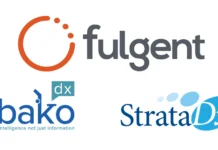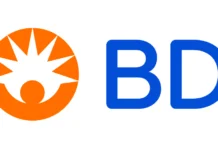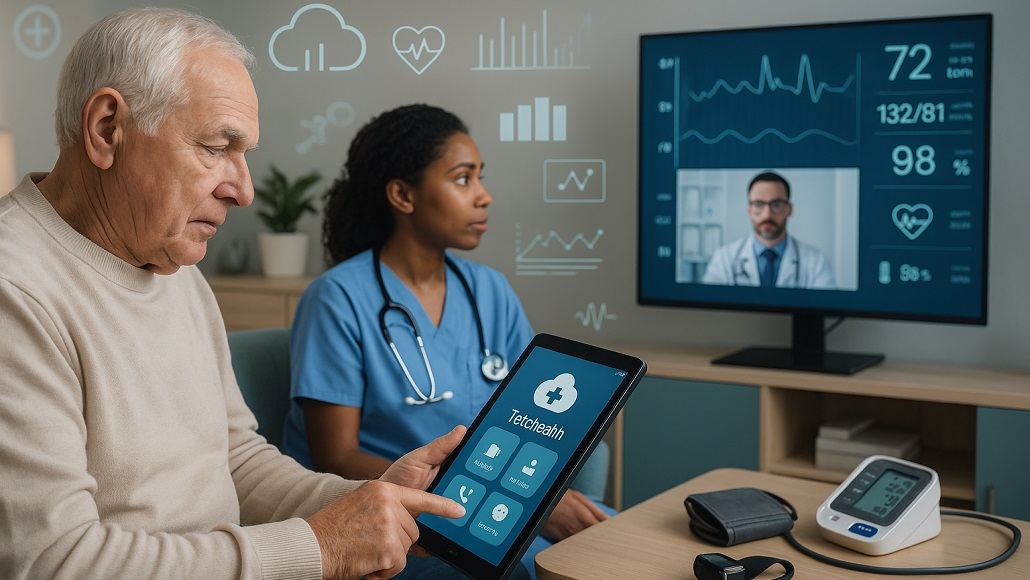It is well to be noted that the intersection when it comes to digital technology along with healthcare fundamentally restructures how care gets delivered, managed, and experienced within the United States. Connected health in the US which has in it telehealth, telemedicine, digital health, mhealth, and ehealth, has become a very necessary part in order to address the challenges of the nation, which are an aging population, rising expenditures, chronic disease prevalence, and consistent health disparities. Apparently, the US digital health market, which was valued at almost $81 billion in 2023, is all set to see a surge at a CAGR of almost 20% all through 2030, thereby reflecting the fast adoption as well as investment within these technologies.
The Urgency for Connected Health in the US
Ongoing expenditure along with demographic pressures
- It is well to be noted that US healthcare spending is anticipated to reach almost $5 trillion by 2025. It is primarily due to chronic diseases as well as an aging population.
- Chronic conditions comprise 70 to 90% of the total health spending within the United States, thereby strengthening the hospitals, public programs, and also primary care.
- Workforce shortages, along with health inequities, go on to further intensify the requirement in terms of efficient solutions and also the ones that are also scalable.
Digital technology and its promise
- The growth when it comes to smartphones, health applications, and wearables has all made health information, along with tracking tools, broadly accessible. More than two-thirds of the Americans own smartphones, and almost 37% of adults made use of telemedicine in 2021.
- It is worth noting that COVID-19 dramatically accelerated digital adoption, with telehealth visits as well as remote tracking becoming mainstream.
Transformation of patient engagement along with empowerment
Education & Self-Management
- Apparently, digital tools go on to empower patients to access their information, get in touch with peers, and also manage their chronic issues. Applications such as PatientsLikeMe and Noom go on to support lifestyle changes and also research participation.
- Interestingly, online communities, along with patient portals, have also become very important as far as engagement and transparency are concerned.
Remote tracking as well as treatment adherence
- Remote patient tracking is broadly made use of when it comes to chronic disease management, cancer care, COPD, asthma, and also senior care by helping patients to remain at home while the clinicians track their health.
- Automated reminders, along with medication tracking applications, enhance adherence as well as decrease hospitalization rates.
Mental health along with digital support
- Behavioral platforms, which are virtual like ConcertHealth, go on to integrate the digital mental health services along with primary care, thereby broadening the access and also elevating the outcomes.
- Peer support and also online therapy applications decrease the stigma and reach out to the underserved populations.
Revolutionizing the healthcare delivery
Provider roles and workflows – redefined
- Digital adoption happens to be reshaping the provider workflows with AI-powered tools along with process automation, decreasing the administrative burden and also, in some cases, clinician burnout.
- Telehealth, along with digital triage, makespatient access and care coordination seamless, thereby enabling the providers to stress intricate cases.
Elevating care within home as well as community settings
- It is worth noting that RPM, along with telemedicine, helps more care to get delivered at home, thereby decreasing any unnecessary hospitalizations and also supporting the aging-in-place preferences when it comes to seniors.
- Hospital at Home programs such as AH-HaH by Atrium Health mix in-person as well as virtual care, thereby enhancing the outcomes and decreasing the expenditures.
Community as well as hospital integration
- Hospitals make use of digital observation systems as well as AI analytics in order to enhance patient safety and also resource management.
- Mobile health workers, who are equipped with digital tools, raise the productivity and help with more proactive as well as preventive care.
Policy, regulation, and strategic initiatives in the US
Federal along with state leadership
- Interoperability, patient access, and digital infrastructure modernization all happen to be driven by the Centers for Medicare & Medicaid Services (CMS) as well as the Office of the National Coordinator for Health IT (ONC).
- FDA has also gone on to establish a digital health advisory committee in order to address the rising technologies like wearables and artificial intelligence, along with digital therapeutics.
- States are also going ahead and enacting health data privacy laws, thereby expanding the protection that goes beyond HIPAA in order to cover health data from various applications as well as wearables.
- Pandemic-era telehealth expansion has also led to advocacy when it comes to permanent Medicare coverage as well as regulatory clarity in terms of remote prescribing along with reimbursement.
Industry collaborations
- Technology giants like Google and Apple, as well as pharma companies, are investing in various digital health initiatives and launching platforms for health monitoring, patient engagement, and research.
Innovation and transformation – what lies ahead?
Technologies that are emerging
- IoT and 5G – They happen to be powering real-time, robotic surgery, remote diagnostics, as well as continuous patient tracking.
- AI, along with predictive analytics – It is used for early diagnosis, customized care, and even operational efficiency.
- Digital clinical trials – Apple’s research kit goes on to accelerate the research and broaden the participation.
- 3D bioprinting along with smart implants – Helping with customized medicine as well as advanced prosthetics.
Value-based care, which is patient-centric
- The transition from reactive and episodic care to continuous, proactive, and customized health management happens to be central to the US healthcare transformation.
- The fact is that value-based models are actually incentivizing the digital tools so as to enhance the outcomes and decrease the costs.
Let us be clear – Connected health in the US happens to be revolutionizing its healthcare by way of expanding access, helping proactive and data-driven care, and also empowering patients. While the issues remain in terms of privacy, interoperability, and equitable access, the ongoing policy initiatives along with technological innovation as well as industry collaboration are indeed driving the sector towards being more patient-centered and effective and also getting to a future that is sustainable.


















